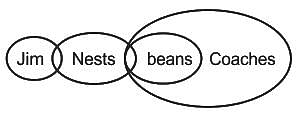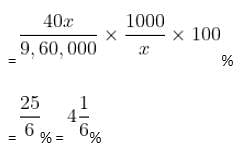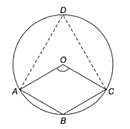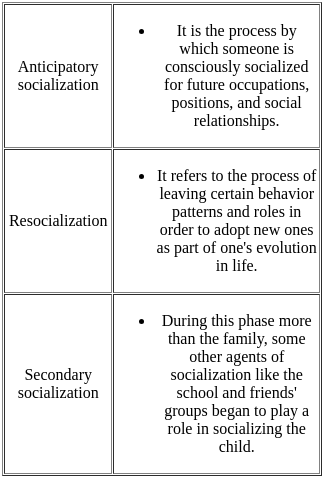Uttarakhand D.El.Ed Mock Test - 8 - UTET MCQ
30 Questions MCQ Test - Uttarakhand D.El.Ed Mock Test - 8
What is the effect of the Earth's axial tilt on the number of daylight hours during the summer in the Northern Hemisphere?
Which Indian city is known for the historical site of Fatehpur Sikri, built during the reign of Emperor Akbar?
| 1 Crore+ students have signed up on EduRev. Have you? Download the App |
Which stadium hosted the opening and closing ceremonies of the 2008 Summer Olympics in Beijing, China?
Which of the following directors was honored with the Dada Saheb Phalke Award for his contribution to Indian cinema?
Directions:
In each of the following questions, there are four sentences or parts of sentences that form a paragraph. Identify the sentence(s) or part(s) of sentence(s) that is/are correct in terms of grammar and usage (including spelling, punctuation, and logical consistency). Then, choose the most appropriate option.
A. The first human settlements in Myanmar appeared some 11000 years ago.
B. The stone and fossilized-wood tools used by these people
C. have been named Anyathian, from Anyatha (another term for Upper Burma);
D. little else, however, is known of these people.
Read the each sentence to find out whether there is any grammatical error in it. The error, if any will be in one part of the sentence. The letter of that part is the answer. If there is no error, the answer is 'D'. (Ignore the errors of punctuation, if any).
Which phenomenon is characterized by intense rainfall exceeding 100 mm/h over a small geographical area?
Direction: Read the following information carefully and answer the questions given below.
Nine people J, K, L, M, N, O, P, Q and R were born on the 13th of nine different months of the year 2000 but not necessarily in the same order. No one was born after October and none of them was born in January. Only one person was born in one month. For all calculations of ages use 2022 as the current year.
P was born before R. The number of persons born between P and Q is the same as the number of persons born between Q and L. Three persons were born between O and K, where both were born in a month having 31 days. The number of persons born before N is the same as the number of persons born after N. The number of persons born between O and N is the same as the number of persons born between N and M. J was born in the month having 30 days, but not in September. The number of persons born after K is the same as the number of persons born before Q. L was born in the month having days less than 31.
Q. Four of the following five are alike in a certain way thus formed a group. Which of the following is not the part of the group?
Directions: Read the given information carefully and answer the questions given beside:
A certain number of people are sitting in a row watching F1 racing. All of them are facing towards the south direction. The distance between any two adjacent persons is the same.
The number of people sitting between A and C is the same as the number of people sitting between X and C. At most 25 people are sitting in a row. X is an immediate neighbour of D, who sits on one of the ends. Two people are sitting between A and Z. The number of people sitting between D and C is the same as the number of people sitting between C and Y. C sits fourth to the right of Z. The number of people sitting to the right of A is the same as the number of people sitting to the left of Z.
Q. How many seats are there to the left of C
Read the given statements and conclusions carefully. Assuming that the information given in the statements is true, even if it appears to be at variance with commonly known facts, decide which of the given conclusions logically follow(s) from the statements.
Statements :
Some jims are nests.
Some nests are beams.
All beams are coaches.
Conclusions :
I. Some coaches are nests.
II. Some beams are jims.
III. No beam is a jim.
IV. Some nests are jims.
What is the no of zeroes at the end of the product of the no from1 to 100 ?
A man has some hens and cows. If the number of heads be 48 and the number of feet equals 140, then the number of hens will be:
What percentage of numbers from 1 to 70 have 1 or 9 in the unit's digit?
X varies jointly as Y and Z; and X = 6 when Y = 3, Z = 2; find X when Y = 5, Z = 7.
A student needed to find the arithmetic mean of the numbers 3, 11, 7, 9, 15, 13, 8, 19, 17, 21, 14 and x. He found the mean to be 12. What is the value of x?
Two boys starts from the same place walking at the rate of 5 kmph and 5.5 kmph respectively in the same direction. What time will they take to be 8.5 km apart?
An unscrupulous vendor professes to sell guavas at cost price but she uses a weight of 960 gm instead of a 1 kg weight. Her gain percent is
The length, breadth and height of a room are in the ratio of 3 : 2 : 1. If its volume be 1296 m3, find its breadth
In the following figure, it is given that O is the centre of the circle and ㄥAOC = 140°. Find ㄥABC.
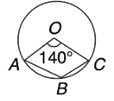
The expression a2 + ab + b2 is _________for a < 0, b < 0
What would the remainder when the square of the largest 4 digit prime number is divided by 6?
Students' failure is often connected with disinterest in learning tasks. This can be minimized by:
______ is altering existing schemas or creating new ones in response to new information.
Given below are two statements : One is labelled as Assertion (A) and the other is labelled as Reason (R):
Assertion (A) : A learner centered approach provides best experience for learners.
Reason (R) : Learner centered approach does not acknowledge the needs of the learner as central to learning experience.
In the light of the above statements, choose the correct answer from the options given below :


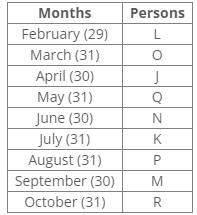


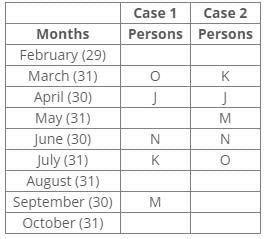
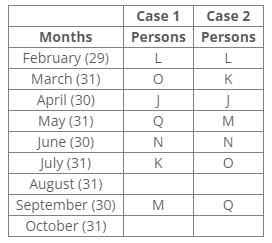
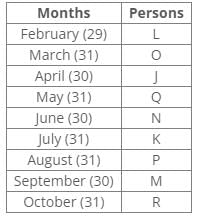

 Hence, Case 1 is the final arrangement.
Hence, Case 1 is the final arrangement.